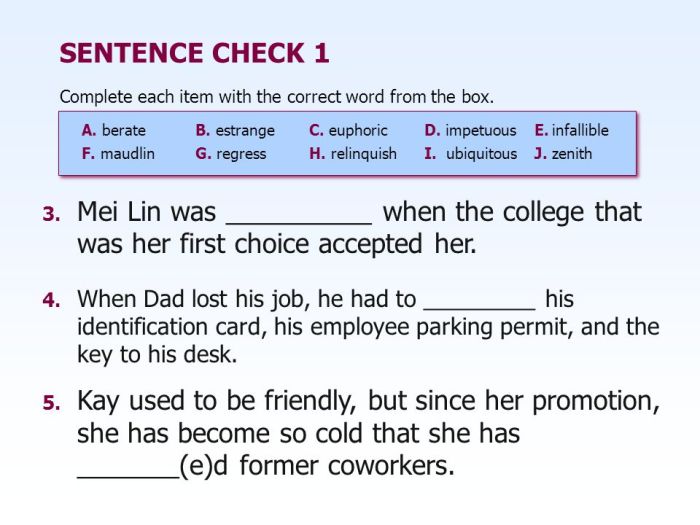Embark on a journey into the realm of Chapter 4 Sentence Check 1, where we delve into the intricacies of sentence structure and clarity, unveiling the secrets to effective communication and engaging writing.
In this chapter, we will explore the fundamental building blocks of sentences, identifying their essential elements and understanding their functions. We will uncover common sentence errors and equip you with the tools to rectify them, ensuring precision and clarity in your written expression.
Sentence Structure
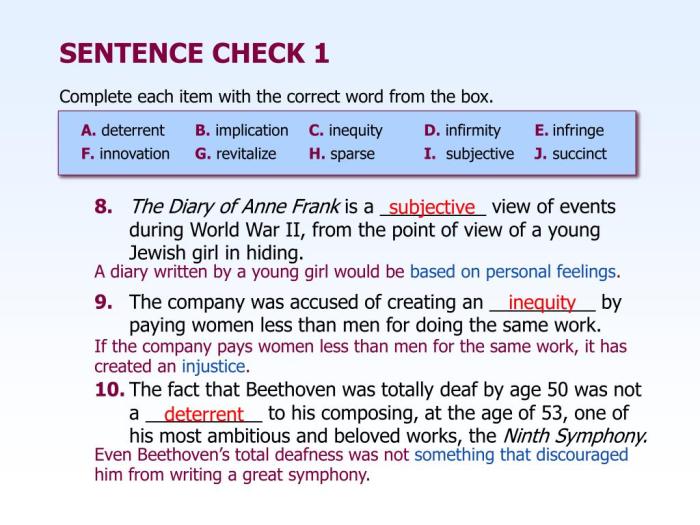
A sentence is a group of words that expresses a complete thought. It typically consists of a subject, a verb, and an object.
The subject is the person, place, or thing that is performing the action of the verb. The verb is the action that is being performed. The object is the person, place, or thing that is receiving the action of the verb.
Types of Sentences
There are three main types of sentences: simple, compound, and complex.
- A simple sentence contains one independent clause.
- A compound sentence contains two or more independent clauses joined by a coordinating conjunction (such as and, but, or, nor, for, so, yet).
- A complex sentence contains one independent clause and one or more dependent clauses (clauses that cannot stand alone as a sentence).
Sentence structure is important for clarity and understanding. A well-structured sentence will be easy to read and understand. A poorly structured sentence will be confusing and difficult to understand.
Sentence Elements
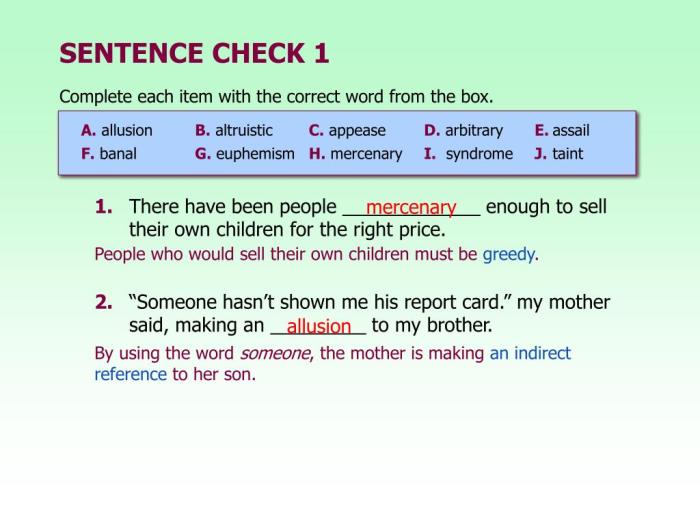
Sentences are the building blocks of language, and they consist of various elements that work together to convey meaning. These elements include nouns, verbs, adjectives, and adverbs, each playing a specific role in the sentence.
Nouns are words that refer to people, places, things, or ideas. They can be singular or plural, and they can be used as subjects, objects, or complements in a sentence.
Verbs
Verbs are words that describe actions, states, or occurrences. They are the core of a sentence and can be either transitive (requiring an object) or intransitive (not requiring an object).
Adjectives
Adjectives are words that describe nouns or pronouns. They provide additional information about the qualities or characteristics of the subject.
Adverbs
Adverbs are words that modify verbs, adjectives, or other adverbs. They provide information about how, when, where, or to what extent something happens.
By combining these elements, we can create sentences that convey complex and nuanced meanings. For example, the sentence “The happy children played in the park” includes a noun (children), a verb (played), an adjective (happy), and an adverb (in the park).
Together, these elements create a clear and concise statement about the actions of the children.
Sentence Errors
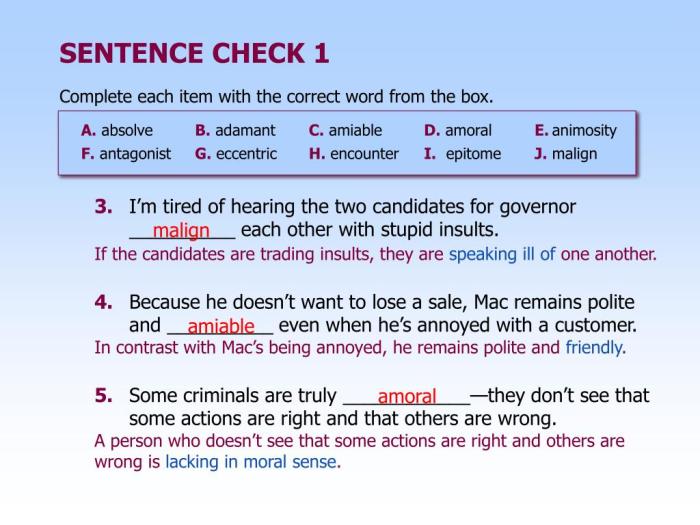
Sentences are the building blocks of writing. They convey ideas and information, and they help us to communicate with each other. However, sentences can also be full of errors. These errors can make our writing difficult to read and understand, and they can even lead to misunderstandings.
There are three common types of sentence errors: fragments, run-ons, and comma splices. Fragments are sentences that are missing a subject or a verb. Run-ons are sentences that have two or more independent clauses that are not joined correctly. Comma splices are sentences that have two or more independent clauses that are joined with only a comma.
Identifying and Correcting Sentence Errors
The first step to correcting sentence errors is to identify them. Here are some tips for identifying fragments, run-ons, and comma splices:
- Fragments:Fragments are often short and incomplete. They may be missing a subject, a verb, or both. For example, the following sentence is a fragment: “Because I was tired.” This sentence is missing a subject. To correct it, we can add a subject, such as “I” or “We.”
The corrected sentence would be: “Because I was tired, I went to bed.”
- Run-ons:Run-ons are sentences that have two or more independent clauses that are not joined correctly. Independent clauses are clauses that can stand alone as complete sentences. For example, the following sentence is a run-on: “I went to the store I bought some milk.”
This sentence has two independent clauses: “I went to the store” and “I bought some milk.” To correct it, we can use a comma and a coordinating conjunction, such as “and” or “but.” The corrected sentence would be: “I went to the store, and I bought some milk.”
In chapter 4 sentence check 1, we’ll delve into some tricky grammar points. If you’re looking for extra practice, check out the sag mal 3rd edition pdf . It’s a great resource for reinforcing the concepts covered in chapter 4 sentence check 1.
- Comma splices:Comma splices are sentences that have two or more independent clauses that are joined with only a comma. For example, the following sentence is a comma splice: “I went to the store, I bought some milk.” This sentence has two independent clauses: “I went to the store” and “I bought some milk.”
To correct it, we can use a comma and a coordinating conjunction, such as “and” or “but.” The corrected sentence would be: “I went to the store, and I bought some milk.”
Sentence Clarity
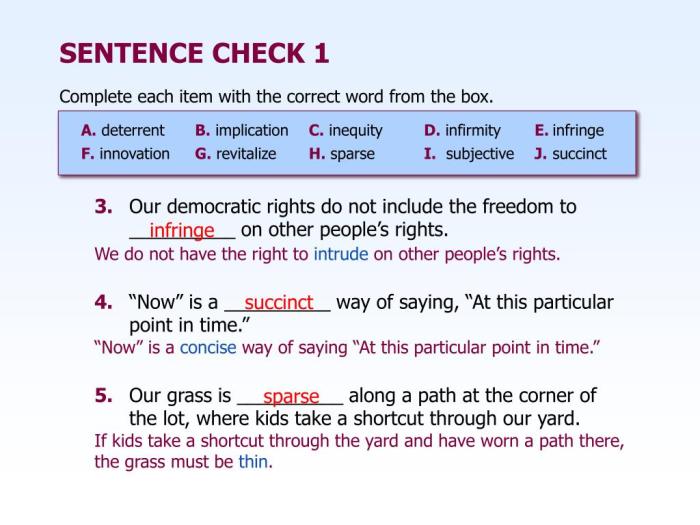
In the realm of effective communication, sentence clarity reigns supreme. A well-crafted sentence, like a translucent window, allows the intended message to shine through with pristine precision. Clarity ensures that your words land with impact, leaving no room for ambiguity or misinterpretation.
Techniques for Enhancing Sentence Clarity, Chapter 4 sentence check 1
To achieve sentence clarity, a writer can employ a symphony of techniques, each contributing to the overall lucidity of the written word. One such technique is the judicious use of active voice. Active voice places the subject of the sentence at the helm, propelling the action forward with vigor and clarity.
Consider the following examples:
- Passive Voice:The book was read by the student.
- Active Voice:The student read the book.
As you can see, the active voice imbues the sentence with a sense of immediacy and directness, making it easier for the reader to grasp the intended meaning.
Another key element of sentence clarity is the avoidance of jargon and technical terms. These specialized words may be familiar to a select few but can alienate a broader audience. Instead, opt for language that is accessible and universally understood.
If using technical terms is unavoidable, be sure to provide clear definitions or explanations.
Finally, brevity is the soul of wit and the cornerstone of sentence clarity. Concise sentences, like well-honed swords, cut through the clutter and deliver their message with surgical precision. Avoid unnecessary words and phrases that add bulk without substance. Remember, clarity is not measured by the length of a sentence but by its ability to convey the intended meaning with the utmost efficiency.
Sentence Variety
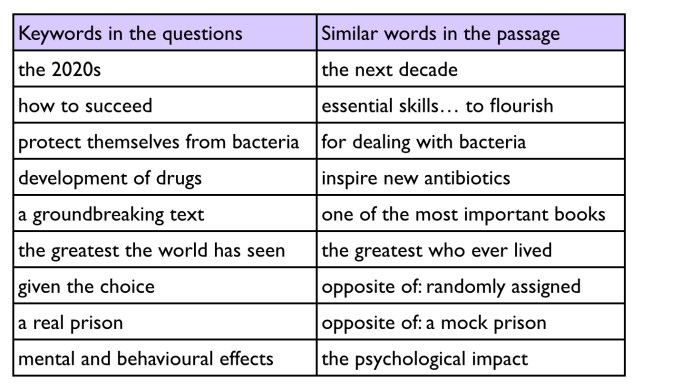
In the realm of writing, sentence variety is the secret sauce that transforms dull prose into a captivating symphony of words. It’s the art of crafting sentences that vary in length, structure, and type, creating a dynamic and engaging reading experience.
There are several ways to achieve sentence variety. One is to experiment with sentence length. Short, snappy sentences can add punch and emphasis, while longer, more complex sentences can provide depth and nuance.
Varying Sentence Structure
Another aspect of sentence variety is varying sentence structure. Instead of relying solely on the subject-verb-object pattern, explore different structures, such as inversions, questions, and fragments. These unconventional constructions can add interest and break up the monotony of predictable syntax.
Types of Clauses
Incorporating different types of clauses is another effective way to enhance sentence variety. Independent clauses can stand alone as complete thoughts, while dependent clauses add additional information and depth. By combining clauses using coordinating or subordinating conjunctions, you can create sentences that are both complex and engaging.
Examples of sentences that demonstrate sentence variety:
- The rain poured down relentlessly, drenching the city streets.
- Although the sun was shining, the wind howled like a banshee.
- Short, simple sentences can pack a punch.
- In the realm of imagination, anything is possible.
- Questions, like this one, can provoke thought.
Essential Questionnaire: Chapter 4 Sentence Check 1
What is the basic structure of a sentence?
A sentence typically consists of a subject, a verb, and an object, which together convey a complete thought.
How can I improve sentence clarity?
Use active voice, avoid jargon, keep sentences concise, and vary sentence length and structure.
